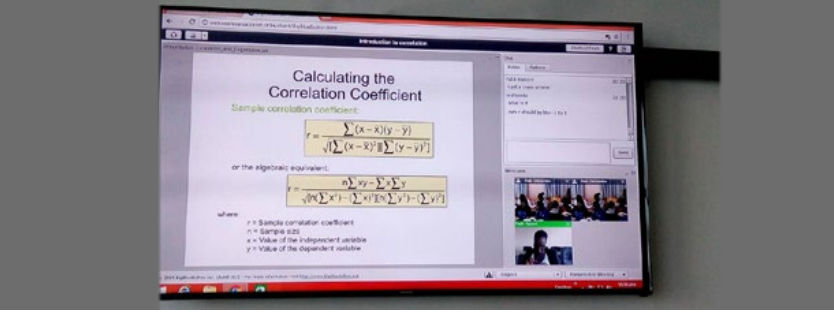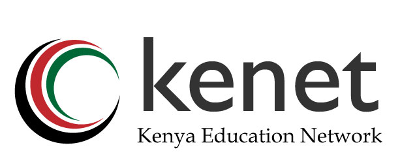You are here
Bridging a 40-kilometer gap with Remote Teaching: The Case of Daystar University
Almost a year into the KENET Remote teaching project, learning has been recorded to have been efficient at Daystar Universities- with the Main Campus located in Athi River and the satellite Campus in Valley Road, Nairobi. From saving a student a 40 km journey to increasing reach and diversity of learning, the KENET Remote Teaching Project which was launched in 2017 entails use of web conferencing technology in education. This is a relatively new concept in the Kenyan Higher Education scenes, and with KENET as an implementation partner and project funder, the homegrown project makes learning convenient by increasing access to education and making learning flexible.
The project, still on its pilot phase was intended to reduce the cost of teaching multiple classes, as many Universities in Kenya have satellite campuses spread out across the Country. The project explores the possibility of one lecturer teaching parallel classes using web conferencing. This means that students can attend classes without having to travel from one campus to the other or be physically present in the classroom where a lecture is taking place. This is made possible by web conferencing system features’ which blend learning seamlessly, as students and lectures can remotely share audio and video, and view presentations with extended whiteboard capabilities (pointer, zooming and drawing). They can also collaborate through the public and private chat. The system also offers an option of using one’s own device to log in to the KENET web conferencing system to attend a class.
Faith Korir, a fourth-year student at Daystar University who took a Research and Statistics class using the Remote Teaching Project remarks that she found using her own device better in place of the projector. “My second lesson was so much fun”, she explains. “I could hear the lecturer and see everything. And for my third remote teaching class I used my laptop which I found better because I could control everything using my hand and not necessarily use the remote all the time. I could write notes, control the camera and the board, and view the whole class or the lecturer.”

Faith Korir, student at Daystar University narrating her experience with using Remote Teaching
At the University, the project is already at its implementation stage and is running for the second semester. Dr. Rosemary Kowuor, a Senior Lecturer and Chair of Communication Department who also serves as the project lead for the Remote Teaching Project at Daystar University notes that many students and lecturers had signed up for the pilot project when it kicked off. “Many people signed up for the pilot project. However, we finally narrowed down to five courses: COM 302 (Statistics for communication), COM 243 (Business writing), COM 226 (Interpersonal and group communication, COM 231 (Introduction to Media studies) and COM 686 (Programme monitoring and evaluation), she says.
To attest to this, a Monitoring and Evaluating report revelead that most students expressed a positive attitude towards Remote Teaching. The study was done by Alain Blaise Ngono, a Masters student in Development Communications at Daystar University, Nairobi Campus. Alain first took a Remote Teaching class for his monitoring and evaluation course. As a result, he was inspired to undertake the entire project for his monitoring and evaluation class research paper. During his survey, he had meetings with the KENET project coordinating team, the Daystar Head of Department, and administered a questionnaire to18 classmates to assess their level of satisfaction.
“I had a chance to interact with the Remote Teaching Program since the beginning of August semester 2017 for my Monitoring and Evaluation class. The experience has been quite helpful especially that we are evening class students and most of us have to juggle competing activities such as work and families. The Remote Teaching Program comes in handy for us as it perfectly integrates social media (WhatsApp), online learning platform, technology and on-site sessions to enable students to continually access colleagues and the instructor. Being one of the participating classes in the pilot project for Nairobi campus, I picked the KENET Remote Teaching Program for my Monitoring and Evaluation exercise,” remarks Alain.

A screen projecting an ongoing class at Daystar University
His paper, based on action research on experiences of communication students in his class during the August 2017 semester, found that there was a favourable attitude towards the new approach of remote learning, with 61% of the respondents being either satisfied or very satisfied. In addition, 89% of the respondents admitted a cost reduction impact due to the new approach. The respondents’ favourability to the project was due seem to the ease and accessibility of online courses (67%), the combination with social networks (89%), and its positive impact on group and individual work (67%).
Prior to 2017, students at the University had not used the distant teaching technology. Faith was the only student taking a Research and Statistics course from the Nairobi Satellite Valley Road Campus as the lecturer was based 40km away at the University Main Campus in Athi River. “I first heard about Remote teaching from someone I knew in Australia who was taking classes in a University in the country,” says Faith. “When I heard about a remote class in Daystar, I just wanted to experience it, and the fact that I was going to have in in Valley Road was even better. The thought of going to Athi River is an expensive affair because one had pay like 300Kshs and took one and a half hours (sic). I only used to pay only 50Kshs to attend my class in the Valley Road Campus.”
The project was fronted by learning institutions themselves, thus fully addressing issues that the Institution was facing prior to the Project. Besides saving costs and time both for students and lecturers, the apparent benefits of the project that have been evident at Daystar was flexibility for part time students and cost reduction for the University.
“All my students were able to actively participate in all the lessons even when I was on work assignment out of Nairobi. I was also able to connect with my students while out of the country. My level of preparedness went a notch high because I had to not only think 'content' but technology for every lesson. As a result, I have advanced immensely as far as teaching with technology is concerned – especially because I also adopted this blended learning approach,” notes Dr. Kowuor who taught the M&E class at Daystar University adding that, “It has helped us manage lack of attendance among participants who at one time or the other are sent by their employers to work out of Nairobi.”
Moving Forward
The Remote Teaching project at Daystar has ascertained that there is also room for improvement. Although the project is still not at its apogee, it has plugged some loopholes in education by offering a cost-effective and feasible solution. The assessment by Alain relays that some 83% of the respondents recommend Daystar to scale up the project, which confirms their satisfaction with the initiative. In addition, some setbacks do not go unmentioned as conveyed by Dr. Kowuor.
“Technical support was the main issue of concern. The lecturer needs someone on standby to attend to technical challenges and adjusting the camera. The timetable for Athi-River campus and Nairobi campus has a time difference. This has made it difficult teaching a class on both campuses at the same time,” she says. “It also takes more time to prepare for remote teaching than the traditional one. I have been lucky enough to have students who are motivated and excited about the idea, most probably because they are mature postgraduate students,” Dr. Kowuor adds.
Although with a few setbacks, Daystar University in the long-term plans to make the service benefit students from Athi River and City Campuses. All classes are targeted and therefore the maximum of students possible will be able to participate. The technology will serve most Daystar students and lecturers and shall be extended to all of them in the long run.
“In today’s generation you can do a lot of things online to save a lot of time and increase productivity. Instead of you being physically at the class and waste time going there and coming back, you could use that time to do something else. One thing I know, if you want to learn, you will learn even if you are not in class,” advises Faith who passed her Research and Statistics course. “It’s all about the attitude.”
When asked if she would still consider using the project, Dr. Kowour quickly responds. “Of course yes, I am still using it because it is on demand. Teaching with technology is here to stay. There are students who have made inquiry and would wish to have all lecturers use this platform as it will help them meet the mandatory minimum attendance required for one to pass any given course. It is far much better than when I solely relied on traditional teaching.”
